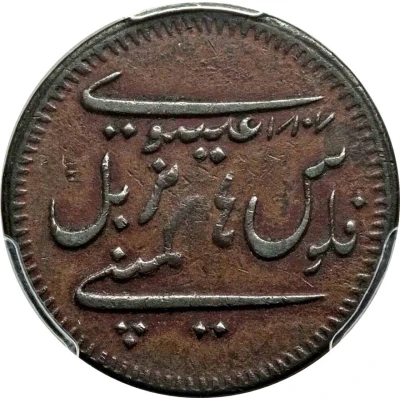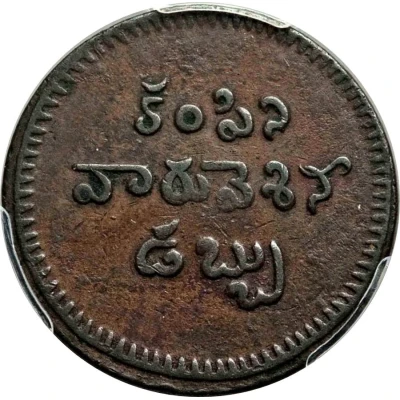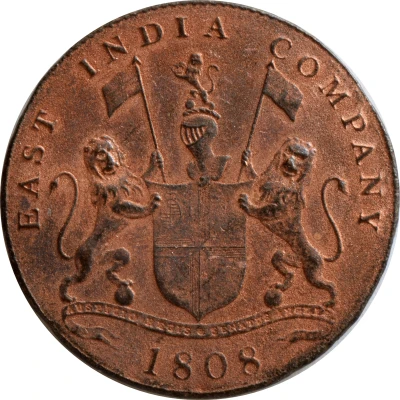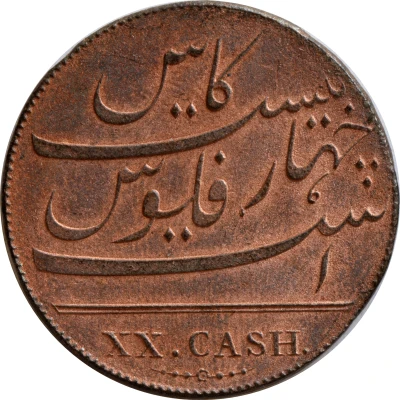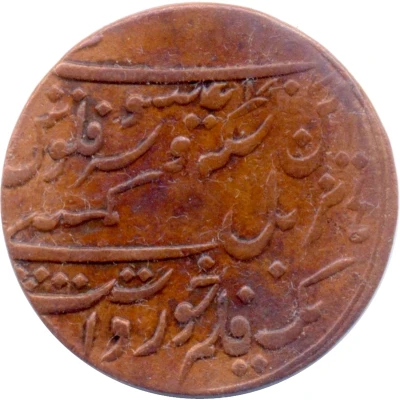
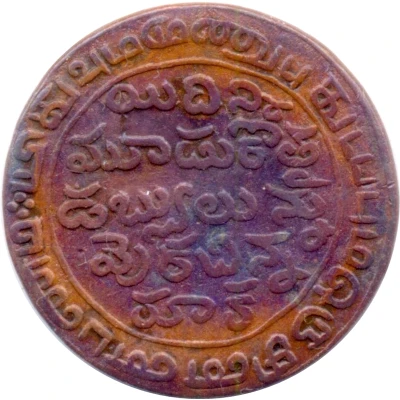

© Joshy Varghese
1 Dub 20 Cash, Regulating Dub
| Copper | 7.56 g | 27.2 mm |
| Issuer | Madras Presidency (British India) |
|---|---|
| Type | Standard circulation coin |
| Years | 1807-1808 |
| Value | 20 Cash = 1 Dub = 1⁄48 Rupee (1⁄168) |
| Currency | Pagoda (1639-1817) |
| Composition | Copper |
| Weight | 7.56 g |
| Diameter | 27.2 mm |
| Shape | Round |
| Orientation | Medal alignment ↑↑ |
| Demonetized | Yes |
| Updated | 2024-10-05 |
| Numista | N#22929 |
|---|---|
| Rarity index | 90% |
Reverse
Telugu (inside circle): Idhi nara mudu kadta dabbulu numera cinara ruku
Tamil (outside circle) = idhuvum munu pudhu dabbum oru sinna panam
All within another plain circle.
Translation: This and three new dubs make one small fanam
Edge
Plain
Comment
- Weight varies 7.15 - 7.56 grams- Issue referred to as a Regulating Dub (reformation coinage)
- Pridmore# 336
Interesting fact
The 1 Dub coin from the Madras Presidency (British India) was used as a currency in India during the 19th century, and its design featured a unique blend of Indian and British elements. The obverse side of the coin depicted a crowned bust of King George III, while the reverse side featured a stylized image of a lion and a palm tree, which were symbols of the British East India Company. This coin was minted in copper and had a weight of 7.56 grams. It's interesting to note that the Dub was a subunit of the Rupee, and 20 Dubs were equal to 1 Rupee. This coin is a rare and valuable collector's item today, and its design reflects the rich history and cultural exchange between India and Britain during the colonial era.
